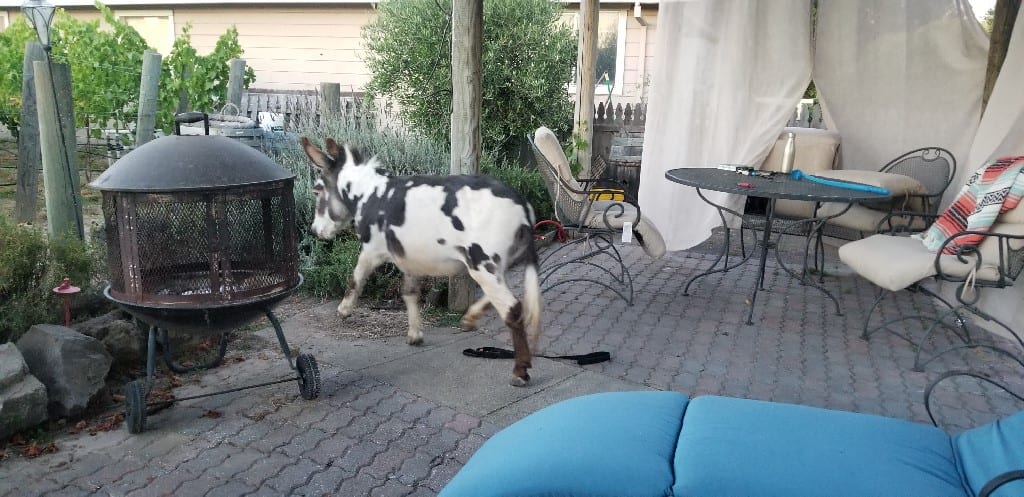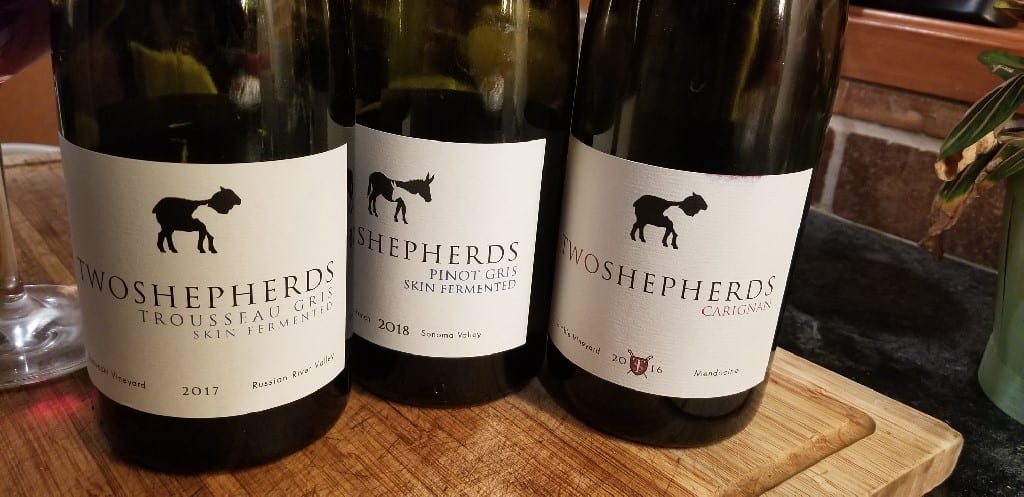
19 Sep Two Shepherds – The Evolution of a Grape Grower
There are many different stories about how one finds themselves in the wine industry. I have been a fan of the Two Shepherds wines ever since I first tasted them a few years ago. And recently, I sat down with owner and winemaker William Allen to learn more about how he went from a shepherd of the palate to a shepherd of the grape. You can read about it in the story I wrote in the Napa Valley Register and you can find here.
Everyone in the wine industry has a story about how they got into wine, and there are many different trajectories.
There are those who go to school and study enology and then work harvests at various wineries before taking a job at one winery. There are those who are born into a family business that includes vineyards and a winery. There are those who make a lot of money in a different industry and then decide to purchase a winery as a “retirement” project.
And there are those who start making wine as a hobby and then grow from there. William Allen of Two Shepherds in Sonoma started as a wine blogger, became garagiste winemaker-turned-commercial-winemaker-and-grape-grower, all in the span of a decade.
Allen began his career in the technology industry. Between 1997 and 2000, he was living in Texas but working for a company based in Petaluma. Regular visits to Petaluma led to weekend trips up to Sonoma.
As the dot-com bubble was bursting in 2000, William was able to convince his company to create a job for him in California. He moved to Marin and later Silicon Valley, where he started brewing beer at home.
While living in the Bay Area, William rented a weekend home in Sonoma and in 2007, he planted five rows of grapes on the rental property. William continued working in technology, but also decided to start a blog.
William’s focus when writing and traveling was always technical. A sociologist and statistics major at school, he used these skills when studying wine. He asked a lot of questions, wondering about neutral barrels, lees and other trends. As his following grew as a wine blogger and he became known as the palate shepherd, William was also collating data points and information about winemaking.
He used the information he collected as he made a small amount of wine in his garage. But two years later, William’s hobby ran amok. He made 175 cases and 2010 was his first commercial vintage. Focusing on Rhone varieties, he made one barrel each of seven different varieties. That same year, William purchased a run-down two-acre property in Sonoma.
In 2015, William’s partner, Karen Daenen, joined Two Shepherds and they moved into their own production facility in Windsor. They also began to clean up the two-acre property in Sonoma. They rebuilt the house and planted a garden that includes 10 different peppers, radish, fennel, beans, beets, corn, tomatoes, pumpkin and apple, pear, persimmon, nectarine and plum fruit trees. They also own a miniature donkey (Dolce), two Nigerian dwarf goats, two dogs and a cat.
As a winemaker, William has always taken a minimal intervention approach to his winemaking. His core philosophies are the use of native yeast, no additions other than minimal SO2, neutral barrel fermentation and aging, un-fined and unfiltered. But he has also evolved and altered some winemaking choices. For example, when making white wines, he uses skin contact and presses right into the fermentation barrel with late racking. He typically used only barrels but has started to embrace stainless steel as well.
And, for red wines, it took him a few years to embrace the idea but now does whole cluster.
As Two Shepherds enters its next decade, William no longer blogs about wine, but another big change is ahead. For the past decade, William has been sourcing fruit from Lodi, Yolo County, Mendocino, Russian River Valley and Dry Creek. William looks for vineyards with vine age managed by experienced growers who follow organic or sustainable practices. With multi-year evergreen contracts, William does not purchase fruit by the tonnage but rather has block or row allocations that he can manage throughout the season, sorting in the vineyard and berry sampling to know when it is ready.
While William is still sourcing fruit from vineyards, William and Karen added a high-density planting of Grenache Gris and Grenache when they rebuilt their property. 2019 will be the first vintage producing estate fruit for the winery.
The entire process has been a learning experience for Two Shepherds. But, growing grapes is an entirely new aspect. There is a joke that if you ask 10 winemakers what they do, they will each tell you something different. Well, according to William, if you ask 10 grape growers what they do, they too will provide 10 different answers. In growing grapes, there is even more to consider. As William explained, “when purchasing fruit, you don’t have to concern yourself with whether it is cane pruned or spur pruned.”
As a grape grower, William is even more conscientious about the grapes. After living through the drought, he is more aware of the stress the vines have gone through. As a result, William started sending juice samples to the lab for testing. The lab tests help make decisions in the wine-making process so that William does not have to do any manipulation in the winery. Knowing that each vintage is different, he explained, “a little bit of science helps to see what is inside the vineyards.”
Read the original story in the Napa Valley Register.
Discover more from Please The Palate
Subscribe to get the latest posts sent to your email.





